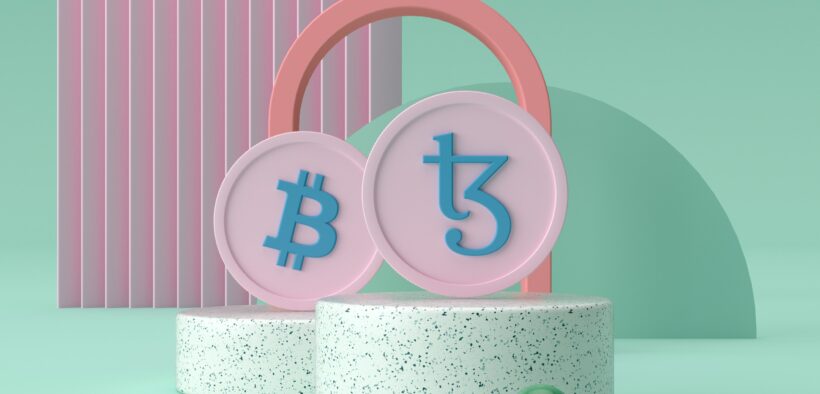
Non-fungible tokens (NFTs) have taken the art world by storm by creating ways for musicians, designers, and other creatives to control how their work is distributed.
Finder’s 2021 NFT Adoption Report found that 4.6 percent of Australian internet users currently own an NFT. However, the NFT market is growing at an exponential rate. The global market for NFTs recorded sales of AU$35 billion last year and according to Shopify research, more than one-quarter (27 percent) of Australian and New Zealand consumers said they will likely purchase an NFT this year.
And, while some people think of NFTs as a passing fad or something for the cool kids, brands are tapping into NFTs to create deep connections with consumers and build long term loyalty.
What are non-fungible tokens (NFTs)?
“NFTs are non-fungible tokens stored on a blockchain, a form of digital ledger that stores a record of each transaction that takes place,” says Raj Kallem, Head of Development at the 1687 Club, an NFT-based membership club.
It’s become common practice to attach digital content—such as art, music, or videos—to these tokens. A token is something that represents something else. In some instances, NFTs can be used to unlock certain consumer benefits — we call this tokengating — and in other instances NFTs are used for authentication and to prove ownership.
Let’s break down the phrase “non-fungible token”. “Fungible” means replaceable or mutually interchangeable. A spoon is an example of something fungible because it lacks unique properties and can therefore easily be replicated or replaced by an identical item. While “‘non-fungible’ simply means that the token is unique and not interchangeable. Real estate, land, and diamonds are examples of assets that are non-fungible because they have unique properties.
Authentication is an important part of NFTs and blockchain technology. Even though people who don’t hold an NFT may be able to view or access digital content attached to someone else’s NFT, only one wallet can own the NFT.
What is token gating?
Token gating is “a way of adding more value to an NFT by allowing the holder exclusive access to a community, content, or even physical products in addition to the digital token,” Kallem says.
For example, Shopify merchants have begun experimenting with token gating NFTs, a strategy that gives token holders access to exclusive products, experiences, early access to store openings, or invitations to members-only events.
Ownership needs to be verified for NFT holders to receive access to tokengated perks. NFTs are owned and stored in a customer’s crypto wallet and tokengating works by peeking into a wallet to see if it has a particular NFT or not.
A tokengating app on the online store is used to check the customer’s wallet to validate that it contains particular NFTs. The customer is prompted to allow the store to view their NFTs in their crypto wallet. After the online store confirms that the customer has the required NFTs, the customer can access the exclusive content.
NFTs: the new loyalty program?
Today, we’re seeing the exponential rise of brands that were born on the web and offer attractive online experiences and strong and loyal relationships with customers.
With customer acquisition costs on the rise, brands are experimenting with new ways to foster a deeper connection to their customers. Things like customer loyalty programs and exploring new engagement channels has become increasingly important as brands invest in both short-term performance initiatives and long-term brand building to create lifelong customers and brand evangelists.
For retailers, exclusive product access is one of the most practical tokengating use cases where limited edition items are only available to token holders as a way to reward loyal customers and fans.
Tokengated commerce can also be used to access future NFT releases and airdrops, as well as exclusive access to communities, including Discord channels, in-person events and retail store activations.
In the US, many brands like the Chicago Bulls and Martha Stewart are beginning to experiment with NFTs. Shopify recently partnered with NFT collection, Doodles, at SXSW 2022 to create an immersive experience called Doodleland for festival-goers and Doodle NFT holders. While the event was open to everyone, Doodles customers could unlock all kinds of experiences, including exclusive access to apparel and limited-edition merchandise.
austin was magical
@sxsw @Shopify @BehrPaint @VTProDesign pic.twitter.com/dzdxhmQ5kN
— doodles (@doodles) March 23, 2022
Tokengating “yields amazing benefits because of the FOMO (fear of missing out) it can create,” says Ty Daniel Smith, CEO and Co-Founder of crypto brand marketing agency Coinbound. “Word of mouth is one of the most undervalued marketing variables, but tokengating truly proves a case for word of mouth’s ROI potential. When done correctly, NFT projects can go viral with a great concept and utilise tokengating.”
While applications for blockchain technology are constantly evolving, the benefits are clear — it’s secure, builds buzz, and is a great way to build and reward brand loyalty.
This is a really exciting moment in time for both brands and consumers. From crypto to NFTs and tokengated commerce, we’re witnessing the foundations of a world in which Web3 technologies are transforming the types of experiences brands create for their customers to build loyalty, community and connection.
—
Guest Author: Robin Marchant is the director of marketing, APAC – Shopify.
This article first appeared in www.cmocouncil.org
Seeking to build and grow your brand using the force of consumer insight, strategic foresight, creative disruption and technology prowess? Talk to us at +971 50 6254340 or engage@groupisd.com or visit www.groupisd.com/story

